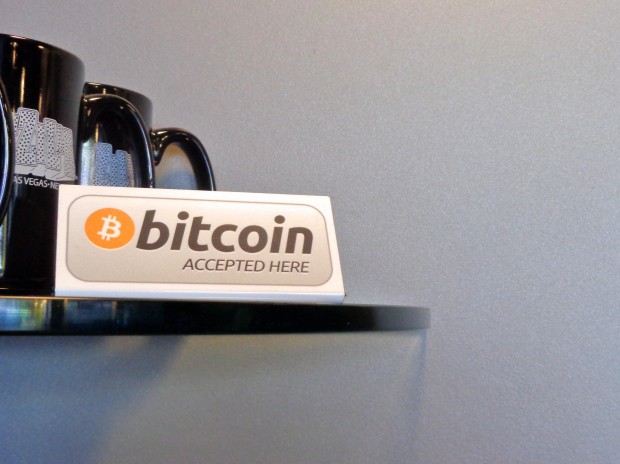Human Achievement of the Day: Bitcoin

On the eve of the financial crisis of 2007-8, financial systems had grown extremely sophisticated, but were still essentially based on a model of trust. When two people engaged in a transaction, they generally relied on a trusted third party to process the payment. This meant that there was room for fraud at worst and at best a transaction cost to the parties.
The transaction cost arises because there is the possibility of the transaction failing to go through, or, in payments-speak, being “reversed.” A reversed payment can occur because the paying party  doesn’t have the money he says he does, or because he is over his credit limit, or because she isn’t who she says she is, among many other examples.
doesn’t have the money he says he does, or because he is over his credit limit, or because she isn’t who she says she is, among many other examples.
Over the years, third parties have developed extremely sophisticated ways to handle these problems, but they have never been able to eliminate the transaction cost entirely. Bridling at the transaction cost from merchants has led to punitive regulations on the payments industry, such as the Durbin Amendment to Dodd-Frank and the harassment of payment processors called Operation Choke Point. These are extremely unfair given the nature of the problem.
On October 31, 2008, a pseudonymous poster styling himself Satoshi Nakomoto on the Cryptography Mailing List hosted at metzdowd.com released a white paper that summarized the problem and proposed a solution. He or she argued:
The cost of mediation increases transaction costs, limiting the minimum practical transaction size and cutting off the possibility for small casual transactions, and there is a broader cost in the loss of ability to make non-reversible payments for nonreversible services. With the possibility of reversal, the need for trust spreads. Merchants must be wary of their customers, hassling them for more information than they would otherwise need. A certain percentage of fraud is accepted as unavoidable. These costs and payment uncertainties can be avoided in person by using physical currency, but no mechanism exists to make payments over a communications channel without a trusted party.
In one of the most brilliant applications of lateral thinking ever seen, Nakamoto proposed the use of cryptography to solve the problem:
What is needed is an electronic payment system based on cryptographic proof instead of trust, allowing any two willing parties to transact directly with each other without the need for a trusted third party. Transactions that are computationally impractical to reverse would protect sellers from fraud, and routine escrow mechanisms could easily be implemented to protect buyers.
The electronic payment system was dubbed “Bitcoin.” This is unfortunate as this had led people to believe that the point of the system was to create a new currency. It was not. The currency is a means to the end of a payments system that eliminates the transaction cost of third parties. What is more important than the value of an individual bitcoin is the public ledger system known as the blockchain that records every transaction. Being based around distributed computing and cryptography, there is no central authority to control or corrupt it.
The blockchain is an emergent system, and could be the basis of much more innovation in the realm of property rights. Not only has it made possible such things as micropayments that were impossible just a few years ago, but it is being used for such disparate ends as energy spot markets and “smart contracts.” The concept of “colored coins” is spreading as people realize that the blockchain can be used for so much more than simple electronic payments.
These are still very early days, and bitcoin is still thought more as a volatile store of value rather than an emergent system of property rights, but the prospects for this particular human achievement are incredibly bright, if regulators do not find a way to stifle it (by regulating people rather than the system, for example).
In particular, the blockchain holds out great promise for people in areas where property rights are weak and corruption is a drain on innovation and resilience. As such, the main beneficiaries of the blockchain could prove to be people in developing countries. The Philippines, for example, is putting its currency on the blockchain.
So not only is the problem of third party trust close to being solved, many other problems are too as a result. That’s a real human achievement.